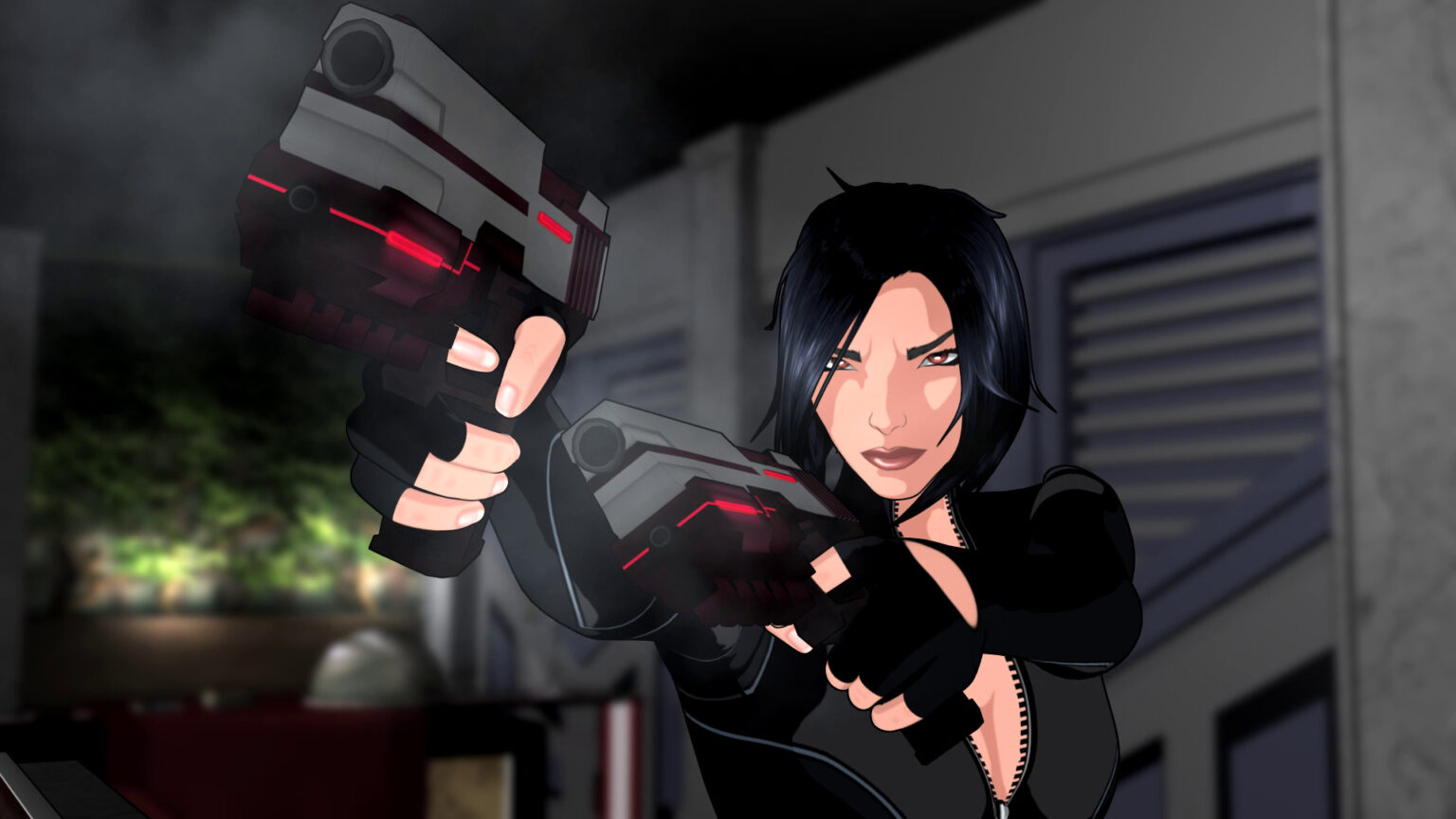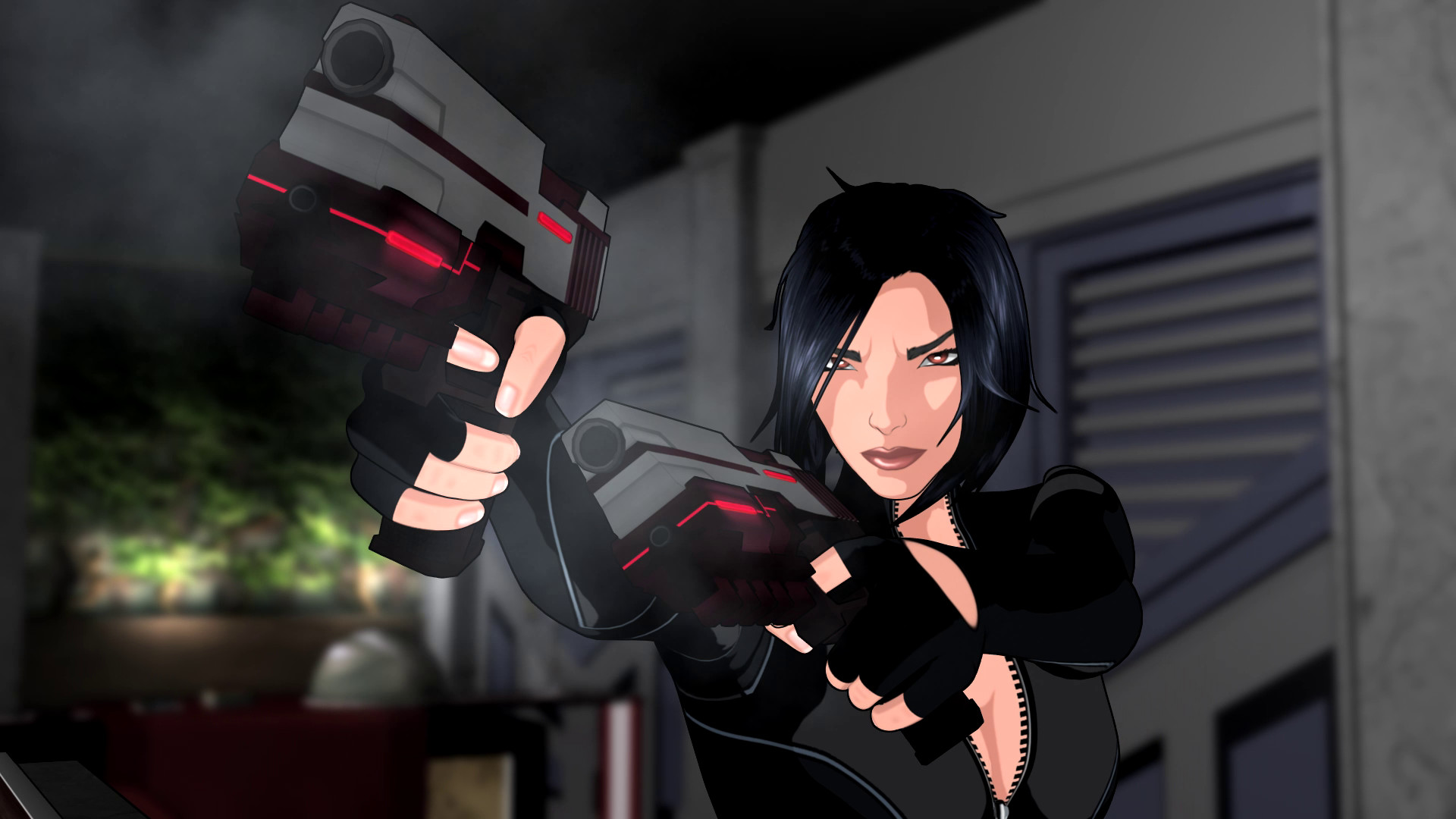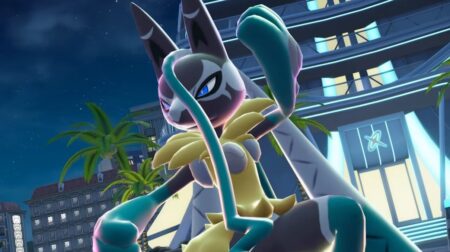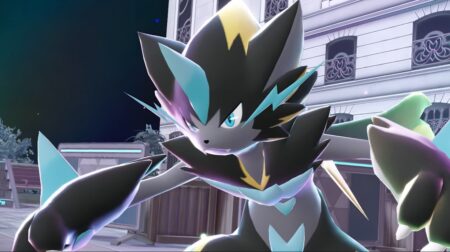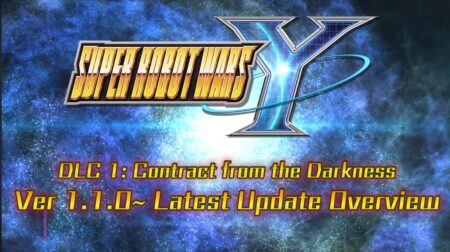The Fear Effect series has a lot of things going on about it. The first game, which launched on the original PlayStation, was one of the first video games ever to use cel-shading techniques. The second game, Fear Effect: Retro Helix, is remembered for its wild ads featuring two of their female characters.
Fear Effect Sedna is the third entry to the series, and it continues the story of Hana, Rain, Deke, and Glaz.

Platform Reviewed: Nintendo Switch
Platforms Available: PC, Xbox One, PS4, Nintendo Switch
Developer: Sushee
Publisher: Square Enix Collective
Release Date: March 6, 2018
Price: $19.99
This review is based on a review code provided by Square Enix Collective.
Sedna takes place six years after the first game. Hana accepts a small mission regarding a statuette, held by the Chinese Ambassador visiting France, which happens to be Hana’s birthplace. Rain tags along since they’re (living) together. They are soon reunited with Deke and Glas. This small mission leads to something bigger.
Enter the new character, Axel. He’s a French secret agent is in charge of watching the Chinese ambassador visiting France. He soon cooperates with Hana despite the conflict in their missions. They then were haunted by the Inuit folklore and legends as they venture to the North Pole.
Storywise, players won’t need to play the other games to understand everything. For fans of the originals, however, Sedna has changed and added elements from the two, big time.
Fear Effect Sedna, according to their Kickstarter page, “is a real-time tactical action game” for PC, PS4, Xbox One, and Nintendo Switch. However, to me, it felt like a twin-stick shooter, with forced tactical strategy added in. The shooting is actually mediocre at best, unsatisfying, and lacks something I can’t point my finger to.

Sedna ditches the fixed camera view of its predecessors and replaces it with an isometric view. It also introduces a new mechanic – the Tactical Pause Mode.
Tactical Pause Mode lets you pause the game world and plan on what to do next. You move the characters around and give them up to three commands. This is supposed to be helpful when controlling more than one character. However, during the first time this mechanic was introduced, there were not a lot of tutorials given.
I know this game is supposed to be hard, but mechanics should at least be explained well, especially if they’re new. Tactical Pause Mode was badly explained that I forgot about it during the first few levels. I was running around shooting bad guys completely ignoring the new way to play.
Stealth mode lets you see how far the enemies’ lines of sight are. This also helped me get far into the game without using Tactical Pause. It was so satisfying creeping behind an enemy guard and killing them in surprise.
Still, during my playthrough, I found Tactical Pause Mode to be helpful in terms of recon. Mixing this with stealth mode even upped the chances of surviving. Not only are the enemies paused, but I can also see their lines of sight, which lets me know where to hide, and which areas to avoid.
It’s a great way to survey how many opponents are in the area, but only if the view is available.
You see, most of the time, parts of an area are blocked by black fog unless a character moves there. This simulates being in the dark while in isometric view. And it works! It added the eerie feeling that someone (or something) is in a corner waiting to kill one of my characters.
Fear Effect Sedna lets you control one of the five heroes, and you can change to any one of them on the fly. But that’s only if the story permits. Choosing the best character to gun through a level is crucial since all of them have their own strengths and weaknesses.
Sedna’s visuals are gorgeous, retaining the originals’ cel-shaded look, but only on the cutscenes. The animations, however, need work. Going back to the cutscenes, I suggest you use headphones when you’re playing in handheld mode. I was playing in a quiet office and even then I couldn’t understand a word the characters are saying. Thank goodness there’re subtitles.

All this talk about the new things in Sedna, and I still haven’t said a thing about why the game’s named Fear Effect, huh?
For those who don’t know, the series is called Fear Effect because of its in-game mechanic – the characters’ life bars, called Fear Meter. They look like the lines on the machines on hospitals which monitors the hearts of a patient – electrocardiograms (EKGs). When a character takes damage, the fear meter goes from green to red, and when it flatlines, it’s game over.
Fear Effect Sedna adds a life bar just below the fear meter. This makes it easier to tell if your character is in need of medical kits that recovers the health of your heroes. The fear meter dictates how well your characters defend and attack. The medkit count is universal for all characters. Everyone can use a medkit grabbed by any of the heroes. Don’t forget to use them wisely, or a game over screen will come get you.
And that game over screen will come at you more than you’d expect.
Fear Effect Sedna taught me to think carefully and plan my next step. True to the series’ heart, Fear Effect Sedna also features gruesome ways your characters can die. Tripped an alarm? A cutscene plays then your character gets beat up then BOOM, game over screen. Made an error while solving a puzzle? Cutscene, dead, game over. Thrown your Switch because of frustration? Cutscene, dead, game over. The first boss being actually easy but the shadow minions are too unfair? Boom, screen.

Seriously, Fear Effect Sedna is not for the impatients. The puzzles are hard. Even the first one took me a good ten minutes. I was eating while playing through this part, I missed the clues given by one of the characters. Turns out, I just had to go back and explore the whole level while memorizing down the clues. Oh yeah about this, it’s better if you have a pen with you. Or, you can just text yourself the clues like I did.
The puzzles may be hard, but overcoming them actually feels great. They’re the best parts of the game. They made me unleash my creativity, making me think outside the box. One of the challenges is so hard, overthinking it is actually the wrong way to solve it. I’m talking about that one server room puzzle. I’d want to tell you how to solve it, but I’d rather let you suffer the way I did. Hehe.
Overall, Fear Effect Sedna is an okay game. The mystery around the story is good enough to encourage me to play. The puzzles are challenging and are worth the effort. Heck, even the voice acting is okay. The app icon on Switch, though? Not so much.

Okay, one last thing. I know this is too much, but at the time of writing, Fear Effect Sedna’s app icon for the Nintendo Switch is boring. You know what a great app icon for the Switch is? Something that tells the gamers what they’re about to put their hands into. You know what isn’t? Letters within textured shapes. Nowhere in “f.e.s.” would I know what game Sedna is. I won’t even know what those letters stand for. An icon is supposed to give players an idea of what a game’s about. Fortunately, this mediocrity might just go away after an update and (hopefully) be replaced by something more engaging.



